
Guide
Little switch lore, part 2: This is how a mechanical switch is constructed
by Kevin Hofer

Switches have the greatest impact on the sound and feel of typing on a mechanical keyboard, with the housing material and stem playing a decisive role. Here’s my attempt at explaining the difference between the four most common types of housing materials.
The switch is what makes a mechanical keyboard mechanical. As the name implies, it involves moving parts and various interacting forces. I’ve already broken down which components are important in the following article.
In this piece, however, I’ll tackle the most common housing materials – polycarbonate, POM, nylon and UHMWPE – as well as the influence they have on how typing feels and sounds. Or at least, I’ll give it a go. After all, not all plastics are created equal.
When I first started my research, I figured explaining all this would be easy. What I can say after taking a deep dive into the materials’ properties, however, is that it’s not that simple. The range of specifications varies widely depending on the data you put in, which is down to the fact that most plastics are mixed, not pure. With this in mind, the information I give on each material should be taken with a grain of salt. They’re ballpark figures, not hard facts. I got all the materials information from MatWeb and Omnexus.
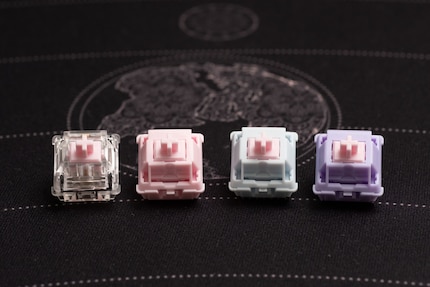
The key characteristics of housing materials are hardness, elastic modulus, specific stiffness and coefficient of friction.
Shore D hardness reveals how deeply a test pin is able to penetrate a material. The higher the figure, the harder the material. Elastic modulus describes the relationship between stress placed on a material and the deformation that results from it. It’s measured in Gigapascal (GPa). Comparing casings of the same size, those with a higher elastic modulus are stiffer than those with a lower elastic modulus. As well as the elastic modulus, specific stiffness takes the density of the material into consideration. That’s calculated by dividing the modulus of elasticity by the density. Density is given in grammes per cubic centimetre (g/cm3). The coefficient of sliding friction has no unit of measurement, and describes how smooth a material is compared to a standard. It’s given on a scale of 0 to 1, with 0 representing a «frictionless» material.
All of these properties affect the way the switch sounds. The softer and higher a material’s elastic modulus, the quieter it sounds. Not only that, but the higher the elastic modulus, the lower the frequency of the sound.
On the other hand, material density also has an effect on sound: high material densities produce lower sounds. However, density and elastic modulus tend to be contradictory. Specific stiffness exists to allow for this. A low specific stiffness means a deeper sound.
The coefficient of friction and the hardness also affect how it feels to type on the switch. Friction produces a scratching noise that can be annoying. The lower the friction, the smoother and more pleasant typing feels. Hardness has a secondary impact on the feel of pushing the switch all the way down. Soft material doesn’t feel as hard when the stem hits the switch base.
Hardness: Shore D93
Elastic modulus: 2.35 GPa
Specific stiffness: 1.96
Coefficient of sliding friction: 0.31
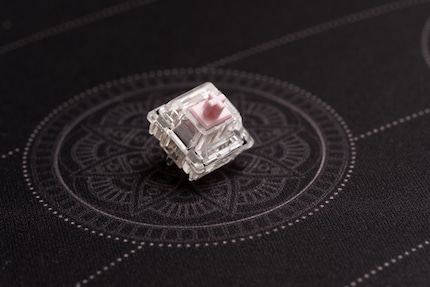
Polycarbonate is probably the crème de la crème of switch case materials. The thermoplastic forms the basis of the majority of transparent housings as well as numerous keyboard cases. And with good reason – the plastic is relatively easy to process.
Hardness: Shore D88
Elastic modulus: 2.5 GPa
Specific stiffness: 1.77
Coefficient of sliding friction: 0.25
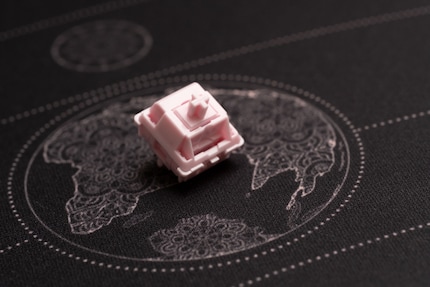
Polyoxymethylene (POM) is also one of the most common switch materials. That said, it’s usually used for stems, not housings. The last few years, however, have seen an increasing number of switch keys with POM housings hit the market. POM is an engineering thermoplastic.
Hardness: Shore D70
Elastic modulus: 2.3 GPa
Specific stiffness: 2
Coefficient of sliding friction: 0.28
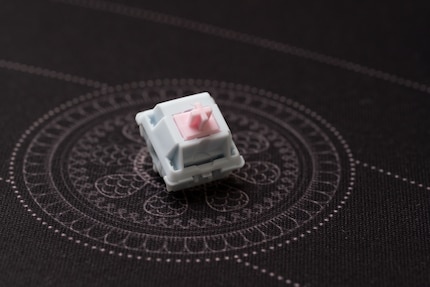
Nylon (in fact a polyamide), like polycarbonate, is often used for switch housings. This is down to the fact that it’s easy to process. Most Cherry MX switch cases are partly composed of this synthetic material, which, incidentally, comes from petroleum.
Hardness: Shore D65
Elastic modulus: 5.3 GPa
Specific stiffness: 5.6
Coefficient of sliding friction: 0.14
Ultra High Molecular Weight Polyethylene (UHMWPE) hasn’t been used as a switch material for long. This is despite the fact that the semi-crystalline, non-polar thermoplastic is actually the most commonly used plastic. Of all the materials in this list, it has the lowest coefficient of sliding friction and the highest elastic modulus.
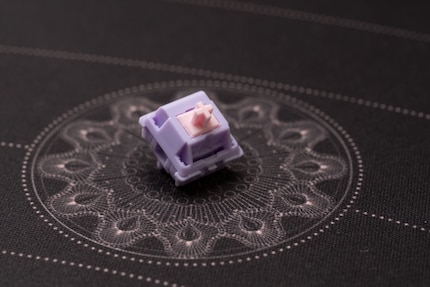
I’d actually planned to write about how different housing materials impact the sound and feel of a switch. The thing is, the material properties make me unsure if that’s entirely true. Like I said, the range of characteristics varies wildly. Neither polycarbonates nor nylons are all made the same – and this is equally true of other materials.
According to the data, POM produces the lowest sound, while UHMWPE produces the highest. The latter, however, does sound the least scratchy, and is very quiet. The other materials lie between these two extremes.
In the following video, I’ve demonstrated some examples for you using MM Switches I got from Wuque Studios. They were manufactured by JWK. MM stands for mix and match; I get to put the individual components of the switch together myself. UHMWPE, modified nylon and modified POM are available for the upper and lower housing. For the stem, I go for POM. Since Wuque Studios doesn’t offer any polycarbonate housings, I opt for Auqa King’s V3 from Everglide, which are made entirely of polycarbonate. I replace the stem with a POM one from Wuque Studios.
I used the same microphone for every recording, positioning it at the same distance and angle from the keyboard each time. In my opinion, polycarbonate actually seems to be the lowest-sounding material, followed by POM (although the latter is supposed to sound lower). To my ears, UHMWPE also sounds lower than nylon, which isn’t supposed to be the case. With the exception of UHMWPE, the order of the specifications at least matches up with my perception of volume and scratchiness.
Of course, there are other factors besides the switch that influence sound. The keyboard, deskmat and room acoustics can also have an impact on it. My difficulty in hearing the difference between materials might also be due to said differences being relatively slight. At the end of the day, they’re all still plastics, with pretty minor differences when it comes to specific stiffness. On the plate where the switches are mounted, for example, the specific stiffness varies from about 2 for plastics to 96 for carbon. This could well have a much more significant impact on the sound than the housing. Last but not least, sound recordings should always be taken with a grain of salt. What’s more, everybody’s sense of hearing is different. You might perceive something differently than I do.
I’ll conclude by saying that after all my research, I’m none the wiser. Although I do have a rough idea, I can’t definitively say what a switch will sound like based on its housing material.
From big data to big brother, Cyborgs to Sci-Fi. All aspects of technology and society fascinate me.
Interesting facts about products, behind-the-scenes looks at manufacturers and deep-dives on interesting people.
Show all
Background information
by Kevin Hofer

Background information
by Kevin Hofer

Background information
by Kevin Hofer